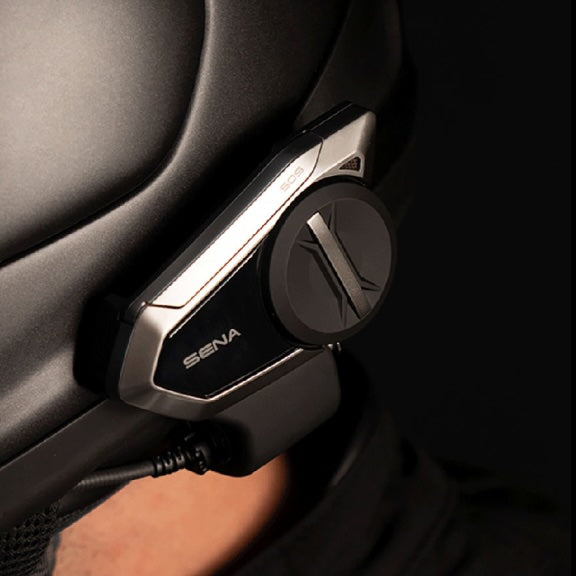
Bluetooth vs. Mesh: Which Motorcycle Helmet Headset Technology Is Right for You?
Bluetooth vs. Mesh: The Battle for Motorcycle Helmet Headset Dominance
As motorcyclists, we crave connection. We want to stay in touch with our riding buddies, listen to music, and navigate our way through unfamiliar roads. Enter motorcycle helmet headsets, a technological marvel that allows us to do all of this without compromising our safety. But with so many options available, it's easy to get lost in the noise. Two prominent technologies dominate the market: Bluetooth and mesh.
In this article, we'll delve into the world of Bluetooth and mesh, comparing and contrasting their strengths and weaknesses to help you choose the best headset for your riding needs.
Understanding Bluetooth
Bluetooth has been a staple in wireless communication for years, and its use in motorcycle helmet headsets is widespread. It relies on a point-to-point connection, meaning two devices must be paired directly with each other. While simple and effective, Bluetooth has limitations, particularly in group communication.
Bluetooth Pros and Cons
Pros:
- Wide compatibility: Bluetooth is a ubiquitous technology, making it compatible with a vast array of devices.
- Affordable: Bluetooth headsets are generally cheaper than mesh counterparts.
- Low power consumption: Bluetooth devices are energy-efficient, extending battery life.
Cons:
- Limited range: Bluetooth signals have a relatively short range, making it difficult for larger groups to communicate effectively.
- Interference: Bluetooth can be susceptible to interference from other wireless devices.
- Poor audio quality: Bluetooth audio can suffer from dropouts and distortion, especially in noisy environments.
- Limited rider-to-rider communication: While Bluetooth headsets can pair with multiple devices, they can only handle one connection at a time, making group communication challenging.
Understanding Mesh
Mesh technology is a game-changer for motorcycle helmet headsets, offering a significant improvement in range and group communication. Unlike Bluetooth, mesh networks create a self-healing, peer-to-peer connection between multiple devices. This means that each headset acts as a relay point, extending the network's reach and ensuring seamless communication.
Mesh Pros and Cons
Pros:
- Long range: Mesh networks can reach far greater distances than Bluetooth, ideal for large groups or riding in open spaces.
- Stable communication: Mesh networks are less susceptible to interference, ensuring a more reliable connection.
- Group communication: Mesh allows for multiple riders to communicate simultaneously, creating a seamless group experience.
- Clear audio quality: Mesh networks deliver high-fidelity audio, minimizing distortion and dropouts.
Cons:
- Higher cost: Mesh headsets are typically more expensive than Bluetooth headsets.
- Limited compatibility: Mesh technology is relatively new, so its compatibility with other devices may be limited.
- Higher power consumption: Mesh networks require more power to maintain their connections, impacting battery life.
Choosing the Right Technology
The best technology for you ultimately depends on your riding style and preferences:
- **Solo riders or small groups:** If you ride solo or with one other rider, Bluetooth offers a simple and affordable solution.
- **Large groups or long-distance riding:** For large groups or extensive rides, mesh technology is the superior choice.
- **Budget:** Bluetooth headsets are generally cheaper, while mesh headsets come with a higher price tag.
Sena's 30 and 50 series helmet headsets use both Bluetooth and Mesh technology so you don't have to choose.
Sena's 30 and 50 series feature three different intercom modes: Multi-Channel Open Mesh Intercom, Group Mesh Intercom™, and Bluetooth Intercom. The Open setting allows for universal connection to other mesh equipped helmet headsets that observe the open standard for connectivity - regardless of manufacturer. Switch to the Group Mesh setting for a private connection amongst a group of up to 24 participants. And finally, you have the option of Bluetooth connectivity between up to four participants.
Sena has a range of Bluetooth only and Mesh only helmet headsets to suit your needs. Contact us if you need further information on the full range of Sena headsets and accessories.
Conclusion
Both Bluetooth and mesh technologies offer distinct advantages and disadvantages. Bluetooth provides a reliable and affordable option for solo riders or small groups, while mesh excels in group communication and range. Ultimately, the best technology for you depends on your specific needs and priorities. By carefully considering your riding style, group size, and budget, you can make an informed decision and choose the motorcycle helmet headset that will enhance your riding experience.
